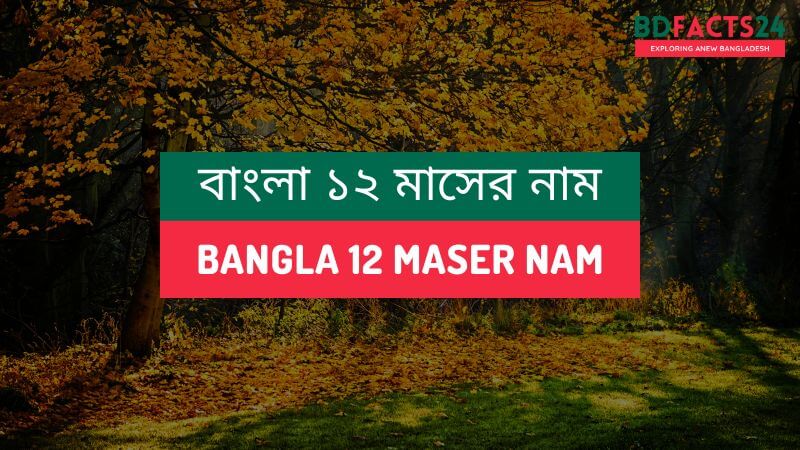Paragraph writing is an essential skill that every student must master, as it is a fundamental part of academic writing.
In this article, we will look at examples of “Rickshaw Puller” Paragraph that students can reference when writing paragraphs about a rickshaw puller, a person who operates a three-wheeled human-powered vehicle known as a rickshaw or a tricycle taxi.
Example 01
Rickshaws are a common sight in the bustling cities of Bangladesh, where they provide an essential mode of transportation for millions of people. These brightly colored three-wheeled vehicles can be seen weaving through the crowded streets, carrying passengers to their destination with speed and efficiency. Rickshaws come in different varieties, from the basic models with wooden seats to more elaborate versions decorated with intricate patterns and designs. Many rickshaw drivers personalize their vehicles with colorful stickers, flags, or other adornments, making each one unique.
Despite being a cheap and convenient way to get around, rickshaws face many challenges in Bangladesh today. In recent years, they have faced increasing competition from ride-sharing apps like Uber and Pathao, which offer similar services at similar prices. Additionally, there is growing concern about the environmental impact of rickshaws, as they contribute to air and noise pollution in densely populated urban areas.
However, despite these challenges, rickshaws remain an integral part of Bangladeshi culture and daily life. They are not only a form of transportation but also a source of employment for thousands of people who work as rickshaw drivers or mechanics. For many tourists, riding in a rickshaw is a must-do experience, as it provides a unique way to explore the city and experience its vibrant culture up close.
Example 02
Rickshaw pulling is a common and iconic occupation in Bangladesh, with tens of thousands of rickshaw pullers operating in cities and towns across the country. Many of these rickshaw pullers are migrants from rural areas who have come to the cities in search of work and a better life. They work long hours, often in sweltering heat and heavy traffic, to earn a meager income that barely sustains their families.
Despite the difficulties they face, rickshaw pullers in Bangladesh are widely respected for their hard work, resilience, and endurance. They are also an integral part of the cultural landscape, with the brightly decorated rickshaws and their melodious bells adding color and charm to the bustling streets of Bangladesh’s cities and towns.
Despite the challenges, rickshaw pulling continues to be a vital source of income and employment for many people in Bangladesh, and efforts to improve the working conditions and welfare of rickshaw pullers remain an important issue for policymakers and social activists in the country.
It is a symbol of Bangladeshi culture and heritage, as well as an important source of employment for thousands of drivers and mechanics. Whether you’re a local commuting to work or a tourist exploring the city’s sights and sounds, taking a ride in a rickshaw is an experience that you won’t soon forget. As efforts continue to promote sustainable and eco-friendly transportation options in Bangladesh, the future of the rickshaw remains uncertain. However, its role in shaping the country’s culture and identity will always be remembered.
Example 03
Rickshaws are a common sight in the bustling cities of Bangladesh, where they provide an essential mode of transportation for millions of people. The origins of rickshaws in Bangladesh can be traced back to the late 19th century when they were first introduced by the British colonial administration as a way to transport goods and people around the city. Over time, rickshaws became more popular among the local population as a cheap and convenient way to get around. Today, they are an iconic symbol of Bangladeshi culture and can be found in every corner of the country.
Rickshaws come in different shapes and sizes, from the basic models with wooden seats to more elaborate versions decorated with intricate patterns and designs. Many rickshaw drivers take great pride in their vehicles, decorating them with colorful stickers, flags, or other adornments to make each one unique. For passengers, riding in a rickshaw is an experience like no other. It provides a front-row seat to the vibrant sights and sounds of the city, as well as an opportunity to interact with locals and learn about their daily lives.
Example 04
Rickshaw pullers in Bangladesh are an essential part of the country’s urban transportation system. They provide an affordable and convenient mode of transport for millions of people, particularly those living in congested and narrow lanes of the cities. Despite the harsh working conditions and low wages, many rickshaw pullers take pride in their work and are often known for their friendly nature and good sense of humor.
In Bangladesh, the brightly colored rickshaws are considered a cultural symbol and are often adorned with intricate decorations and designs. However, the job of rickshaw pulling is not without its challenges, and many rickshaw pullers suffer from health problems such as back pain and respiratory issues due to the constant exertion and exposure to pollution.
Various NGOs and government agencies are working to improve the lives of rickshaw pullers in Bangladesh by providing them with training, healthcare, and social protection. Despite the challenges, rickshaw pulling remains a vital and respected profession in Bangladesh.
Example 05
Rickshaw pullers are an essential part of Bangladesh’s urban transport system, providing a convenient and affordable mode of transport for millions of people. However, the profession is often associated with poverty and marginalization, with rickshaw pullers earning very low wages and facing social stigma. Despite this, many rickshaw pullers take pride in their work and are known for their friendly and jovial nature.
They are an integral part of the country’s cultural landscape, with the brightly painted rickshaws adding color and vibrancy to the streets. In recent years, there have been efforts to improve the working conditions and social status of rickshaw pullers in Bangladesh. Various initiatives have been launched to provide them with better access to education, healthcare, and financial services.
Additionally, new technology, such as e-rickshaws, is being introduced to make their work easier and more efficient. Despite these efforts, the challenges faced by rickshaw pullers in Bangladesh remain significant, and more needs to be done to ensure that they are able to earn a decent living and lead dignified lives.
Example 06
Rickshaw pullers are an essential part of Bangladesh’s urban transportation system, providing a cheap and reliable mode of transport for millions of people. The rickshaw pulling profession is often associated with poverty and social marginalization, with many rickshaw pullers coming from rural areas in search of work. Despite the harsh working conditions and meager income, many rickshaw pullers take pride in their work and are known for their friendly and cheerful nature.
In Bangladesh, the brightly decorated rickshaws are an iconic symbol of the country’s culture and heritage, with their colorful designs and artwork. However, the job of rickshaw pulling is not without its challenges, with many rickshaw pullers suffering from health issues such as back pain and respiratory problems due to the long hours of pulling heavy loads in polluted environments.
Several initiatives have been launched to improve the lives of rickshaw pullers in Bangladesh, such as providing them with training and financial assistance, and introducing e-rickshaws to make their work easier and more efficient. Despite these efforts, more needs to be done to address the systemic issues that lead to poverty and marginalization in the profession and to ensure that rickshaw pullers can earn a decent livelihood with dignity and respect.
Example 07
Rickshaw pulling is a common profession in Bangladesh, with many people relying on this mode of transport to travel around the cities. The brightly colored rickshaws are an iconic symbol of Bangladesh’s cultural heritage and can be seen everywhere on the bustling streets.
Despite the low income and harsh working conditions, many rickshaw pullers take pride in their work and are known for their friendly and helpful nature. However, the job is not without its challenges, with pullers often facing health problems due to the long hours of physical exertion and exposure to pollution.
In recent years, there have been efforts to improve the welfare of rickshaw pullers, with various initiatives providing them with training, healthcare, and financial support. Nevertheless, more needs to be done to ensure that rickshaw pullers in Bangladesh can earn a decent living with dignity and respect.
Example 08
Rickshaw pullers are an essential part of the transportation system in Bangladesh, providing a cheap and convenient mode of transport for millions of people. Despite the low income and challenging working conditions, many rickshaw pullers take pride in their work and are known for their friendly and helpful nature.
The brightly painted rickshaws are a cultural symbol in Bangladesh, with intricate designs and artwork adding to their charm. However, the job of rickshaw pulling is physically demanding and can take a toll on the puller’s health. In recent years, there have been efforts to improve the lives of rickshaw pullers in Bangladesh, with initiatives such as introducing e-rickshaws and providing financial and social support.
Despite these efforts, more needs to be done to ensure that rickshaw pullers are able to earn a decent income and lead dignified lives. Overall, rickshaw pullers play a vital role in the social and economic fabric of Bangladesh and deserve greater recognition and support.
Example 09
A rickshaw is a traditional mode of transportation that is popular in many parts of Asia, including India, Bangladesh, and Thailand. It consists of a two-wheeled carriage with a covered passenger seat at the back, which is pulled by a person on foot or by a bicycle.
The origins of the rickshaw can be traced back to the late 19th century when they were first introduced as a means of transporting people and goods in urban areas. Today, the rickshaw remains a popular and affordable mode of transportation for many people, especially in crowded cities where traffic congestion is a major problem.
Despite the challenges faced by rickshaw pullers, such as low wages and health issues, many take pride in their work and are an integral part of the cultural landscape in many countries. The unique design and charm of the rickshaw continue to fascinate tourists and locals alike, making it a truly iconic symbol of Asia’s vibrant and diverse culture.
Example 10
A rickshaw is a human-powered vehicle that has been used for transportation in many parts of the world for centuries. It typically consists of a two-wheeled cart or carriage that is pulled by a person on foot, either by pushing or pedaling.
The design of rickshaws varies greatly depending on the region, with some models having a canopy for shade and others featuring intricate decorations or artwork. In addition to being a popular mode of transport in many cities and rural areas, rickshaws are also used in tourism and leisure activities.
However, the use of rickshaws has also been the subject of controversy due to concerns about the welfare of the pullers, who often work long hours for low pay and may face health risks from the physical demands of their work. Overall, the use of rickshaws continues to be an important part of the transportation landscape in many parts of the world, although efforts are needed to address the challenges faced by rickshaw pullers.














